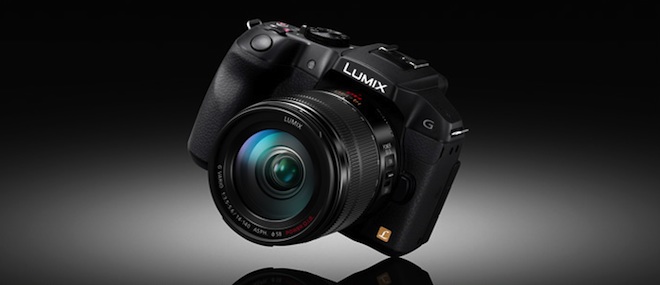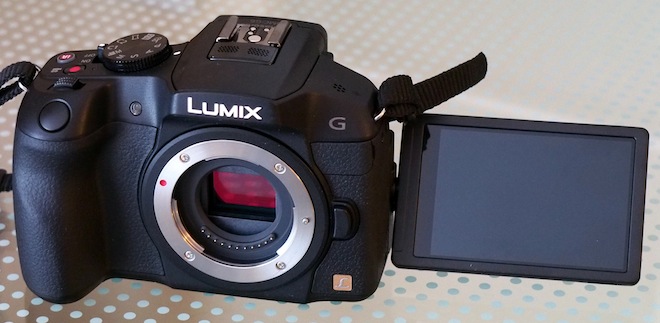The Panasonic G6 has been announced and to be honest it is a bit of a surprise, culling very little in the way of features from the GH3 and quite possibly taking video to new levels on a mid-range camera. £549 body only / $750 and based around the GH2’s multi-aspect sensor (18MP total, 16MP effective), the sensor is larger than the one in the GH3 (1.86x crop vs 2x), the new camera updates the AVCHD codec (adding 1080/60p) and even focus peaking, something the GH3 doesn’t (yet) have!
The G6 contains a number of other improvements over the G5:
- A 3.5mm mic socket, now on the front of the camera so not to block the articulated screen
- A new stop motion animation mode
- Timelapse video mode
- Progressive AVCHD 2.0, 1080/60p
- 24p and full manual control
- Focus peaking
- Zoom rocker switch near the shutter release
- OLED EVF
- 40fps burst mode (and rumours of a 4K / 8MP burst mode at 20fps)
The new camera has a quite attractive design and shares similar looks to its big brother, with a rubber style cladding covering the front of the camera as on the GH3.
The Venus Engine seems to have had an update over even the GH3. There’s a lot of innovative new stuff in there such as the ability to touch objects in a photo and erase them with a content-aware fill (a ‘gesture based heal tool’).
This is complimented by a new 1 million dot LCD, OLED EVF and a touch-pad function when using the EVF. All very nice to have at the approx. $750 mark. This means you can do electronic focus racks by feeling around the frame on the LCD whilst looking through the EVF.
Although updated from the GH2 the codec lacks the stand-out high bitrates and ALL-I options of the GH3. It has the standard AVCHD recording format along with lower quality MP4.
The cinematic 24p mode is all present and correct though at the 24Mbit mark as it was on the original GH2 before the hack. I shall miss the MOV recording mode of the GH3 on the G6 but the standard AVCHD bitrate in 24p shouldn’t cause too much of a problem. The FS100 does pretty well by it.
25p is only available at 20Mbit in MP4 mode on the PAL camera, whilst 1080/60/50p is available in AVCHD 2.0 and MP4 at 28Mbit.
Interestingly all the sockets on the left such as HDMI have been moved and the left of the camera is now completely clear of attachment points. Instead a near-field-communications (NFC) surface takes its place for contactless data transfer. The HDMI socket is now on the right of the camera but unfortunately the SD card slot goes under the battery cover. Having that HDMI cabling on the right is actually pretty good for video shooters who use a DSLR on their right shoulder, as it means the cabling won’t be in your line of sight or pushing up against your neck.
I’m really impressed with what the G6 offers for the entry level price point and great to see the re-birth of the GH2’s sensor which was capable of such insane detail in video mode, with no real moire issues. Whether that has carried over into the new camera remains to be confirmed but it looks likely it will build upon the image quality offered in video mode by the GH2. I will be very curious to see how it compares to the GH3.
Panasonic have really stepped up the fight with Canon and their Rebel line here, offering far more features for the price (and not just video features). I’m sure to be buying this one and seeing how it compares to the GH3. The camera will be available in May.




